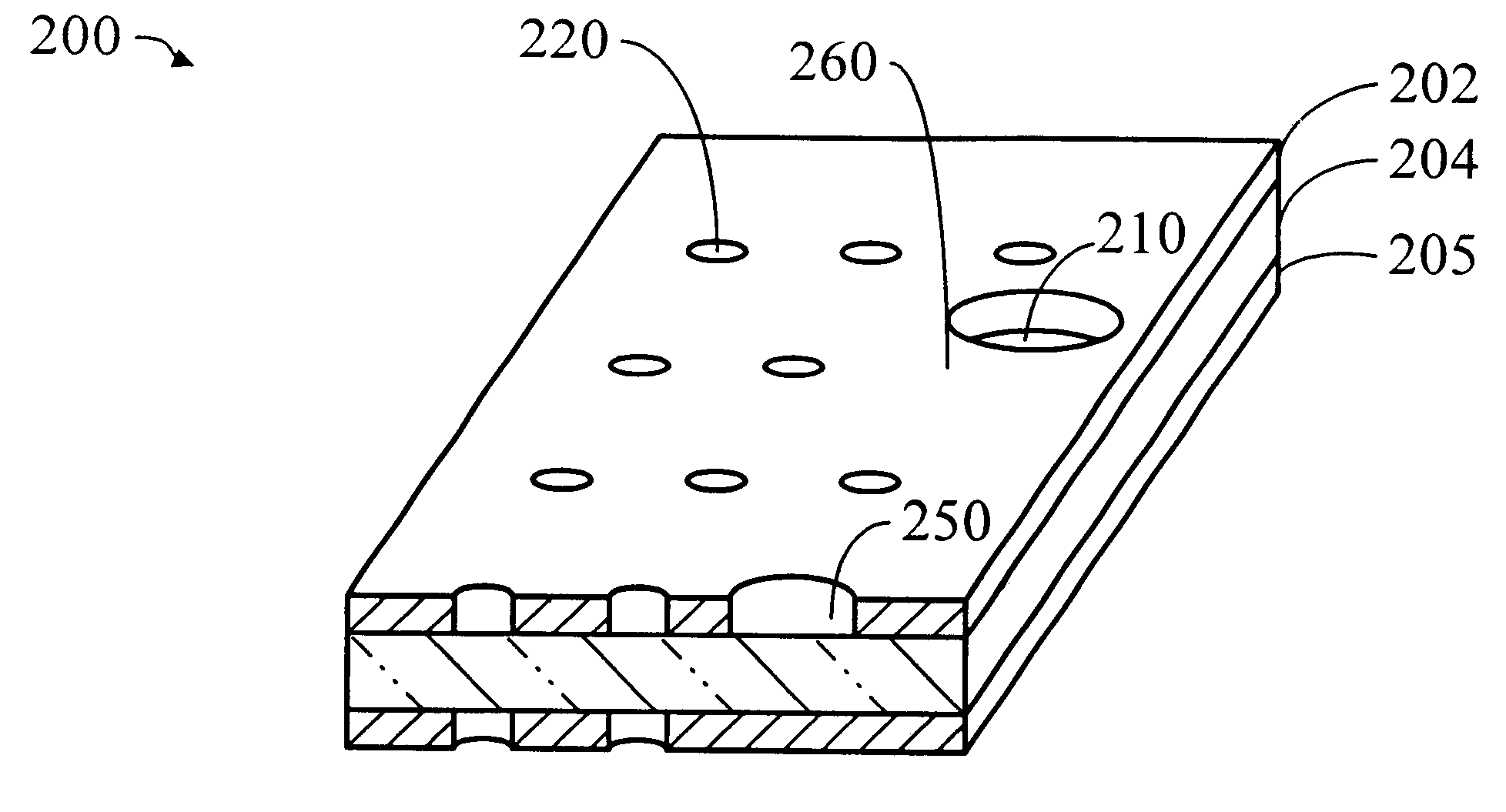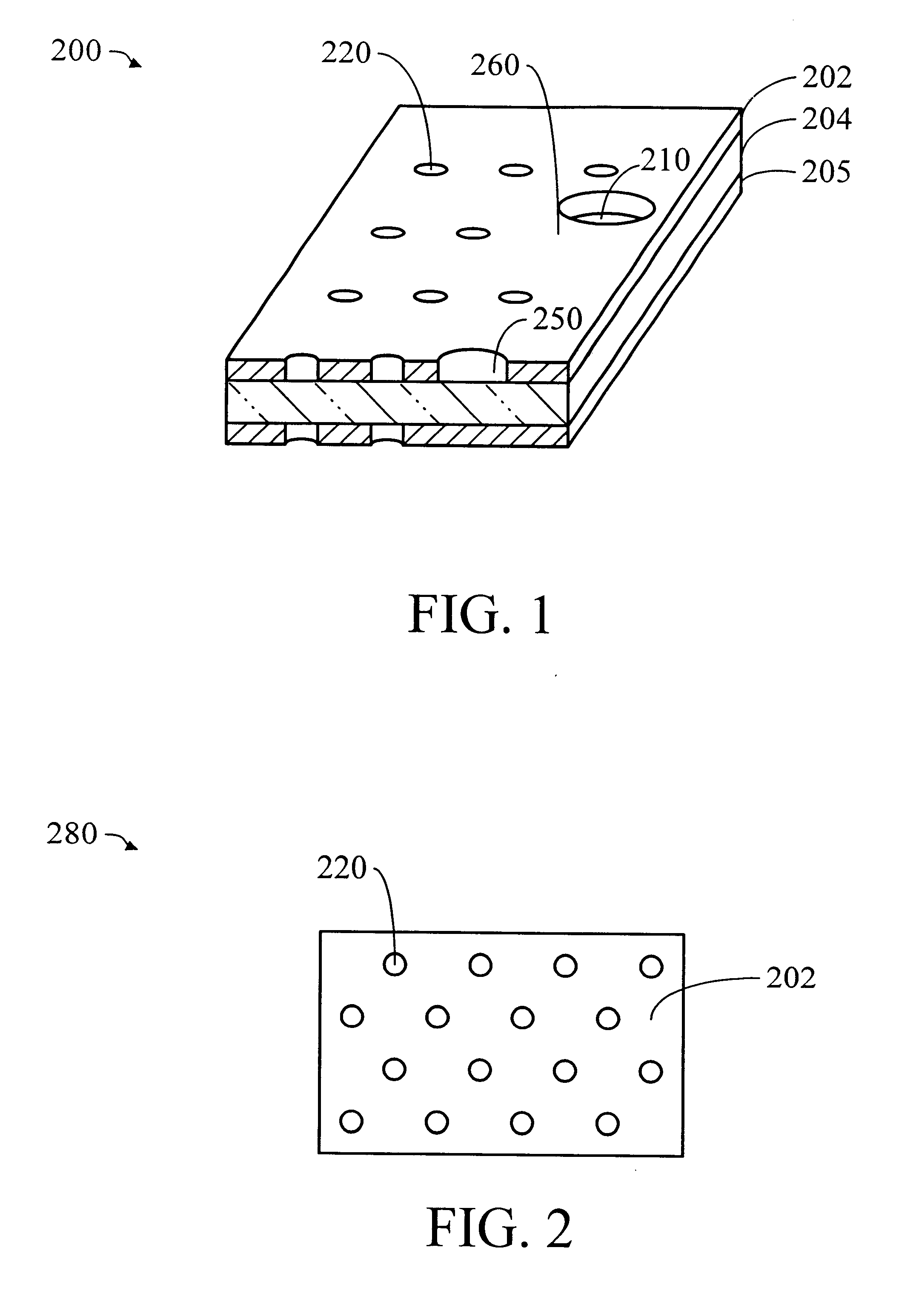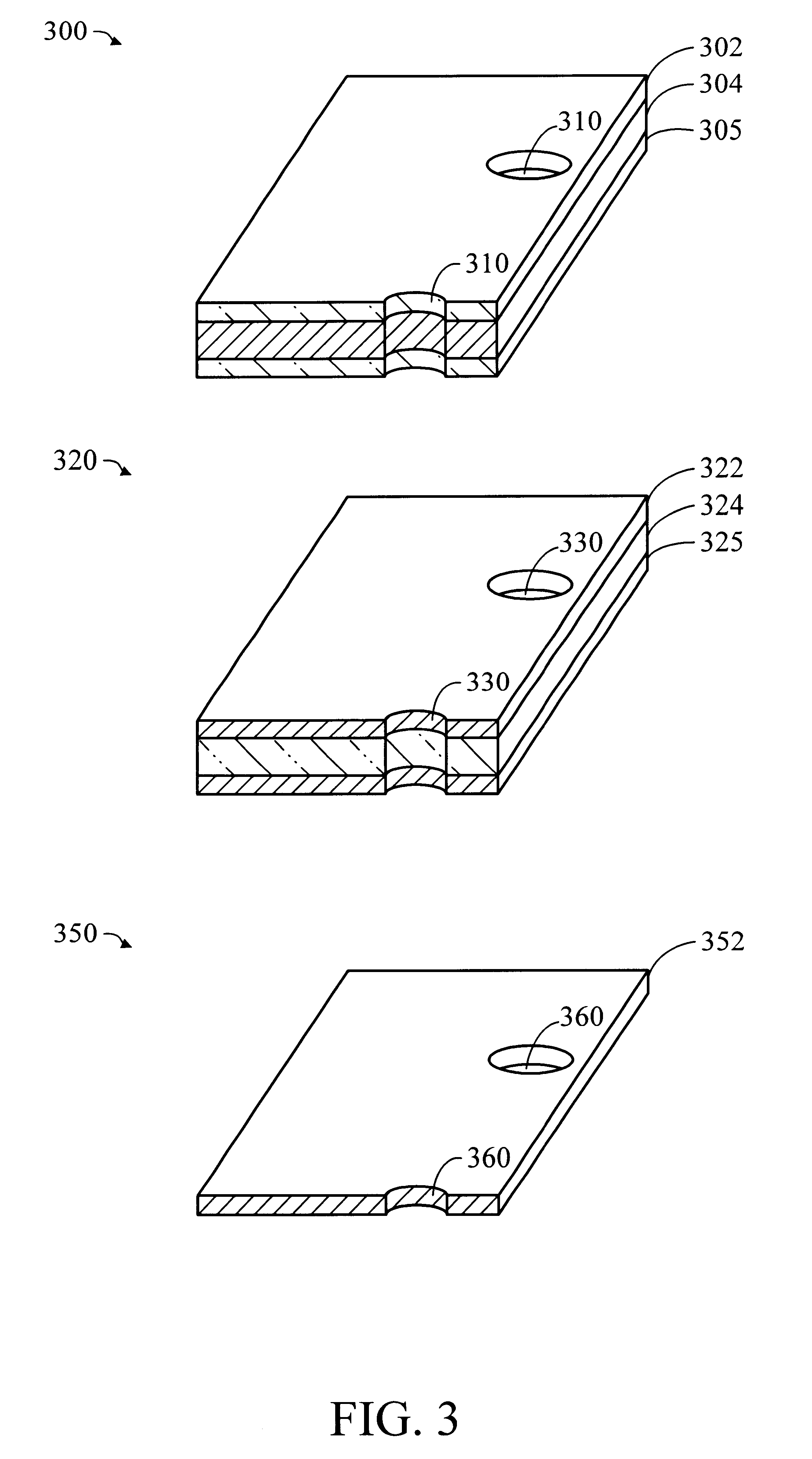Porous power and ground planes for reduced PCB delamination and better reliability
- Summary
- Abstract
- Description
- Claims
- Application Information
AI Technical Summary
Benefits of technology
Problems solved by technology
Method used
Image
Examples
Embodiment Construction
The preferred embodiments of the present invention overcome the limitations of the prior art by providing power and ground planes that are used in Printed Circuit Boards (PCBs) (or PCBs used as Laminate Chip Carriers (LCCs)) and that contain conductive, porous materials. By providing high porosity, these power and ground plane materials allow water or other solvents to pass through the power / ground planes, thereby reducing or eliminating cathodic / anodic filament (CAF) growth and blisters caused by expanding solvent. Water is the main cause of CAF, but other solvents are known to cause delamination. In particular, trichloroethylene, methylene chloride, benzyl alcohol, and propylene carbonate are solvents that can cause delamination or bubbling effects.
The preferred embodiments comprise a variety of conductive, porous materials that may be used for the power and ground planes of PCBs. There are a number of materials available that meet the requirement of porous power and ground planes...
PUM
| Property | Measurement | Unit |
|---|---|---|
| Angle | aaaaa | aaaaa |
| Diameter | aaaaa | aaaaa |
| Diameter | aaaaa | aaaaa |
Abstract
Description
Claims
Application Information
 Login to View More
Login to View More - R&D
- Intellectual Property
- Life Sciences
- Materials
- Tech Scout
- Unparalleled Data Quality
- Higher Quality Content
- 60% Fewer Hallucinations
Browse by: Latest US Patents, China's latest patents, Technical Efficacy Thesaurus, Application Domain, Technology Topic, Popular Technical Reports.
© 2025 PatSnap. All rights reserved.Legal|Privacy policy|Modern Slavery Act Transparency Statement|Sitemap|About US| Contact US: help@patsnap.com



